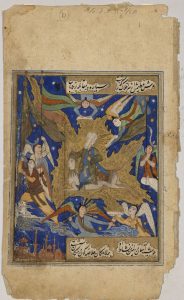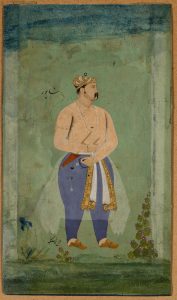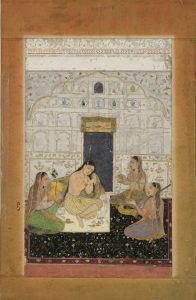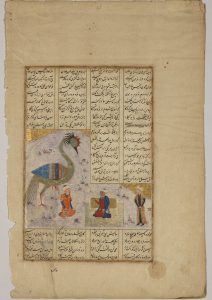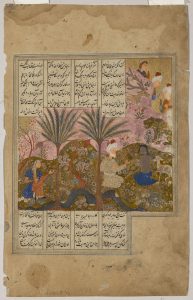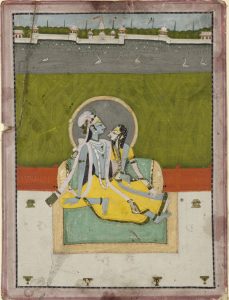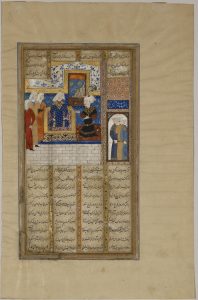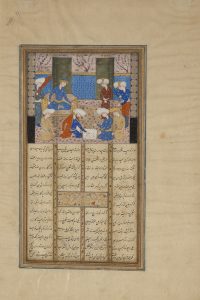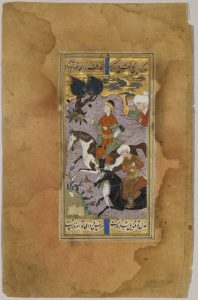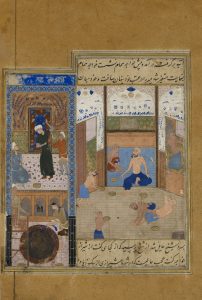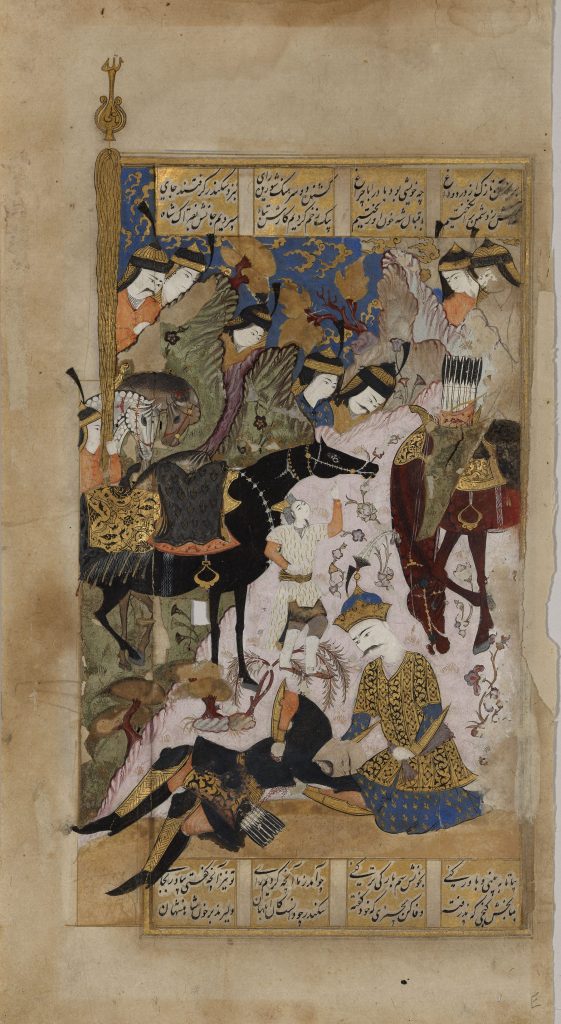The paintings chosen for this exhibition compose a diverse collection of styles from across the geographic region most closely associated with Islamic Art, including modern day Iran and India. These objects are from a period ranging from the 15th-18th centuries CE, during which the region was divided into many empires and dynasties.
Since there was considerable cross-cultural exchange, these ruling powers established individual artistic styles, that were a blend of their own preexisting art traditions and those of their neighbors. These variations are visible in the assorted colors, patterns, figuration, and choices of background featured throughout this exhibit.
Most of the works in this collection began as manuscripts, while very few were composed as single works of art. In those with calligraphy, the relationship between text and image remains evident.
Here, the captivating images, which include extraordinary animals and notable figures from history, have been paired or grouped to explore corresponding styles and narratives of events, mythology and religious traditions.
Nicole Bearden, Smith College AC ’19
[Image Accessibility: Detailed image descriptions written as objectively as possible have also been included for each painting. They provide textual information about non-text content to increase accessibility for people who use screen readers; have slower internet connections; or limited device memory. For more information see Stanford University Online Accessibility Image Descriptions.]
